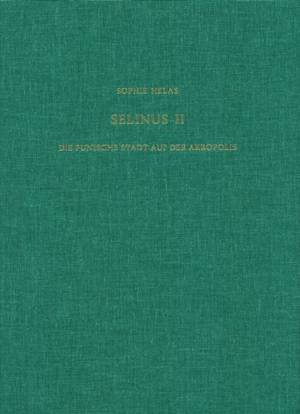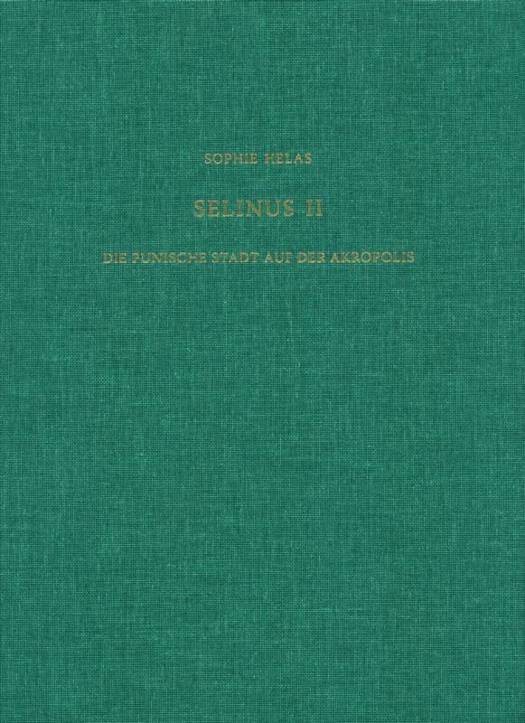
- Retrait gratuit dans votre magasin Club
- 7.000.000 titres dans notre catalogue
- Payer en toute sécurité
- Toujours un magasin près de chez vous
- Retrait gratuit dans votre magasin Club
- 7.000.0000 titres dans notre catalogue
- Payer en toute sécurité
- Toujours un magasin près de chez vous
Description
The ancient city of Selinous on Sicily is known for its magnificent temples and impressive city walls (published in the first volume of the Selinous series) from the Greek period. The ruins from the period of the Punics have been noted to a lesser degree. Selinous, which was founded in the 7th cent. BC by Greek colonists, had developed into a flourishing town, when it was conquered by the Carthagians and heavily destroyed in 409 BC. The second volume of the Selinous series deals with the Punic period of the history of the town, focusing on the years between the Greek period of glory and the abandonment of the settlement in 250 BC.
The comprehensive publication on the Punic remains adds immensely on the knowledge of Punic Selinous. On the basis of a detailed map of the acropolis, Sophie Helas analyses the living quarters and their uraban context (stoa with shops, sanctuaries, 'official' buildings). More than 60 buildings are published for the first time with new plans and reconstructions. Therefore the publication makes a significant contribution to the understanding of the Punic living environment in the western Mediterranean. A synthetic part is followed by detailed catalogues of the houses and their equipment, digressions by architects as well as a presentation of the excavation results of the Punic layers.
The author is always concerned to imbed and analyse the cultural elements. The potential of Selinous regarding questions of acculturation is especially important. The new settlers, who occupied the ruins of the Greek city in the last third of the 4th cent. BC, differed from the former inhabitants markedly: Writing and material culture are related to the Phoenician-Punic cities of the western Mediterranean, especially to Carthage. The change of the appearance of the city and of the houses results out of the necessities and ideals of the new settlers. The publication ends with a detailed analysis of the degree, dimension and time of the Hellenisation of the Punic architecture.
The volume is supplied with a detailed Italian summary.
The comprehensive publication on the Punic remains adds immensely on the knowledge of Punic Selinous. On the basis of a detailed map of the acropolis, Sophie Helas analyses the living quarters and their uraban context (stoa with shops, sanctuaries, 'official' buildings). More than 60 buildings are published for the first time with new plans and reconstructions. Therefore the publication makes a significant contribution to the understanding of the Punic living environment in the western Mediterranean. A synthetic part is followed by detailed catalogues of the houses and their equipment, digressions by architects as well as a presentation of the excavation results of the Punic layers.
The author is always concerned to imbed and analyse the cultural elements. The potential of Selinous regarding questions of acculturation is especially important. The new settlers, who occupied the ruins of the Greek city in the last third of the 4th cent. BC, differed from the former inhabitants markedly: Writing and material culture are related to the Phoenician-Punic cities of the western Mediterranean, especially to Carthage. The change of the appearance of the city and of the houses results out of the necessities and ideals of the new settlers. The publication ends with a detailed analysis of the degree, dimension and time of the Hellenisation of the Punic architecture.
The volume is supplied with a detailed Italian summary.
Spécifications
Parties prenantes
- Auteur(s) :
- Editeur:
Contenu
- Nombre de pages :
- 370
- Langue:
- Allemand
- Collection :
- Tome:
- n° 15
Caractéristiques
- EAN:
- 9783895007088
- Date de parution :
- 30-01-12
- Format:
- Livre
- Format numérique:
- Linnen over kaft
- Dimensions :
- 259 mm x 343 mm
- Poids :
- 3338 g

Les avis
Nous publions uniquement les avis qui respectent les conditions requises. Consultez nos conditions pour les avis.






